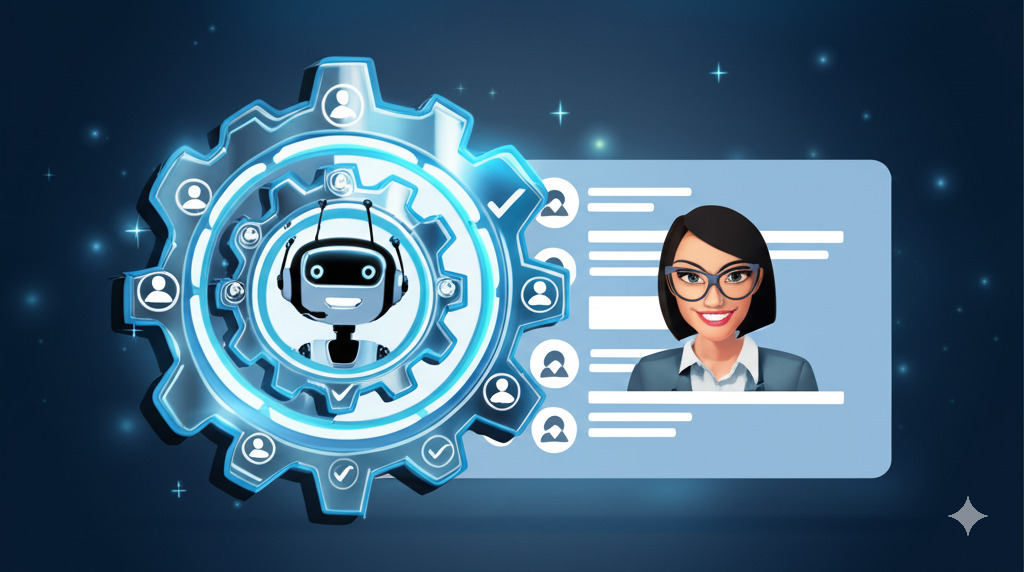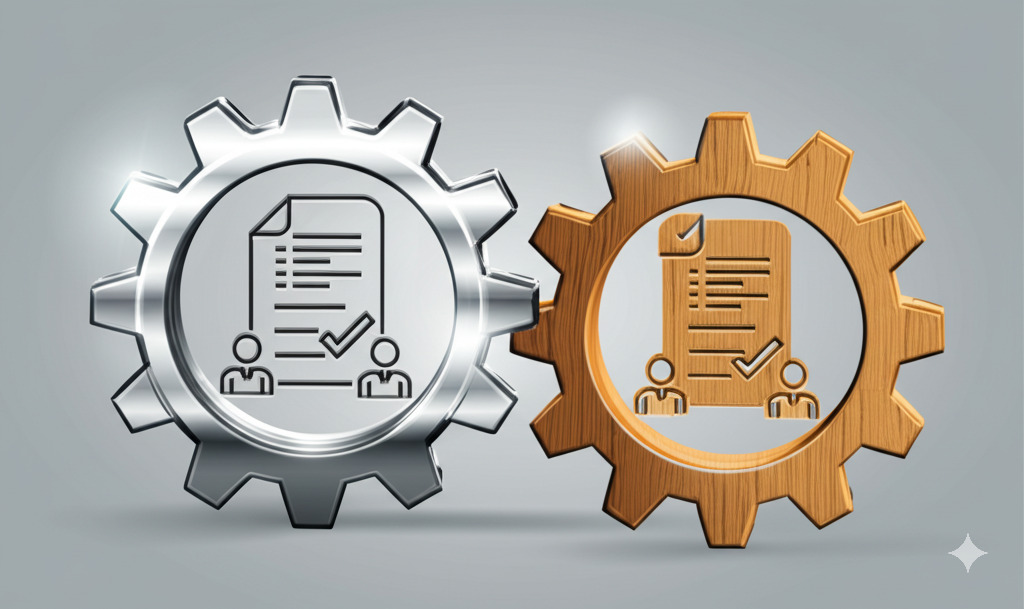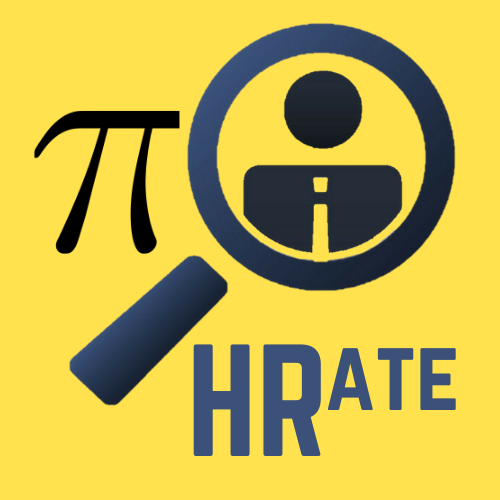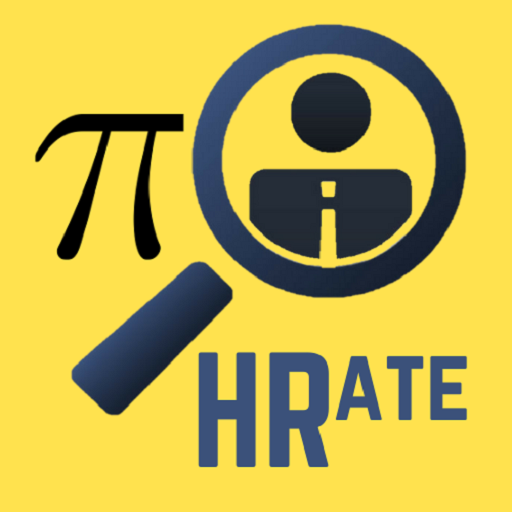AI vs. Human Recruiters: Who Wins in the Hiring Game?

The world of recruitment is undergoing a profound transformation. Once dominated solely by human intuition, networking, and manual processes, talent acquisition is now increasingly influenced, and in some areas driven, by Artificial Intelligence (AI). AI tools promise unprecedented efficiency, data-driven insights, and the ability to handle volume at a scale previously unimaginable. This seismic shift inevitably raises a critical question: in the evolving hiring game, who holds the winning hand – AI or the human recruiter?
The reality, as we’ll explore, is far more nuanced than a simple versus match. It’s not about replacement but augmentation. The true victory lies in understanding the unique strengths and weaknesses of both AI and human recruiters and strategically integrating them to create a hiring process that is efficient, effective, fair, and fundamentally human.
This article delves into the capabilities of AI in recruitment, contrasts them with the enduring value of human recruiters, outlines best practices for achieving a synergistic balance, and addresses the crucial ethical considerations surrounding the use of AI in making decisions that profoundly impact people’s careers and lives.
The Ascent of AI in the Recruitment Arena
AI’s entry into recruitment isn’t just a trend; it’s a response to the growing complexities and demands of modern hiring. Companies face pressure to hire faster, access broader talent pools, improve diversity, enhance candidate experience, and make more objective decisions – all while managing costs. AI offers potential solutions across the recruitment lifecycle:
- Sourcing & Identification: AI algorithms can scan millions of profiles across job boards, professional networks (like LinkedIn), social media, and internal databases far faster than any human. They can identify passive candidates who aren’t actively looking but possess the desired skills.
- Screening & Shortlisting: AI can screen resumes and applications against job requirements, ranking candidates based on qualifications, experience, and keyword matches. This significantly reduces the time recruiters spend on initial, high-volume screening.
- Candidate Engagement (Chatbots): AI-powered chatbots can provide instant responses to candidate queries 24/7, handle initial screening questions, and guide applicants through the process, improving engagement and responsiveness.
- Interview Scheduling: AI tools can automate the often-tedious process of coordinating interview times between candidates and multiple interviewers, finding mutually available slots seamlessly.
- Predictive Analytics: AI can analyze historical hiring data to identify patterns associated with successful hires, helping refine job descriptions, predict candidate success, and even forecast future hiring needs.
- Skills Assessment: Some AI platforms offer automated skills testing or analyze video interviews for specific communication patterns or keywords (though the latter is ethically contentious).
The Strengths of AI Recruiters: Efficiency, Data, and Scale
AI brings undeniable advantages to the recruitment table:
- Unmatched Speed and Efficiency: AI operates 24/7 without fatigue. It can screen thousands of resumes in minutes, schedule interviews automatically, and handle repetitive tasks, freeing up human recruiters for more strategic work. This dramatically accelerates the time-to-hire.
- Data-Driven Decision Making: AI relies on data and predefined algorithms, potentially reducing subjective human biases in initial screening stages. It can identify patterns and correlations in data that humans might miss, leading to more objective shortlisting based purely on qualifications.
- Consistency: AI applies the same criteria to every candidate, ensuring a standardized initial screening process, reducing variations that can occur between different human screeners or even the same screener on different days.
- Wider Talent Pool Access: AI’s ability to scan vast online sources allows companies to tap into a much larger and more diverse pool of potential candidates, including passive talent, than manual sourcing typically allows.
- Enhanced Candidate Experience (in specific areas): Instant responses from chatbots and automated scheduling can improve aspects of the candidate experience, particularly in the early stages, by providing timely communication and reducing waiting times.
- Cost Reduction (Potential): By automating time-consuming tasks, AI can potentially reduce the cost-per-hire over the long term.
The Weaknesses and Limitations of AI Recruiters: The Absence of Nuance
Despite its power, AI is not a silver bullet and has significant limitations:
- Lack of Human Nuance and Empathy: AI cannot truly understand context, gauge personality, assess cultural fit, interpret subtle cues in communication, or demonstrate genuine empathy. It can’t evaluate soft skills like leadership potential, creativity, or collaborative spirit effectively – qualities often crucial for success.
- Potential for Algorithmic Bias: This is a major concern. If the data used to train AI models reflects historical biases in hiring (e.g., favouring candidates from certain backgrounds or universities), the AI will learn and perpetuate those biases at scale, potentially worsening diversity issues rather than solving them. AI is only as unbiased as the data and algorithms it’s built upon.
- Over-reliance on Keywords: AI often screens based on keyword matching. This can lead to overlooking highly qualified candidates with unconventional resumes or those who describe their experience using different terminology. It may struggle with nuanced job roles where skills aren’t easily quantifiable.
- Inability to Assess Potential or Passion: AI assesses past experience and stated skills. It cannot easily gauge a candidate’s passion for the role, their growth potential, or their intrinsic motivation – factors human recruiters often identify through conversation.
- Impersonal Candidate Experience (in later stages): While chatbots offer efficiency, an overly automated process can feel cold and impersonal, particularly during interviews or when delivering sensitive news like rejections. This can damage the employer brand.
- Integration and Implementation Challenges: Implementing AI tools requires investment, technical expertise, and integration with existing HR systems. Training staff to use them effectively also takes time and resources.
- Contextual Understanding Deficit: AI struggles to understand unique circumstances, career gaps explained by personal reasons, or the specific dynamics of a team the candidate might join.
The Strengths of Human Recruiters: Empathy, Strategy, and Judgment
While AI tackles volume and data, human recruiters bring irreplaceable qualities to the hiring process:
- Empathy and Relationship Building: Humans can connect with candidates on a personal level, build rapport and trust, understand their motivations and concerns, and provide a supportive experience. This is crucial for attracting top talent, especially in competitive markets.
- Nuanced Assessment of Soft Skills and Cultural Fit: Experienced recruiters excel at evaluating soft skills, personality traits, communication styles, emotional intelligence, and determining if a candidate will genuinely thrive within the company culture and specific team dynamics.
- Strategic Thinking and Adaptability: Humans can understand complex, unique, or newly created roles, adapt recruitment strategies based on market feedback, and think creatively to find solutions for hard-to-fill positions. They can adjust their approach based on the specific candidate interaction.
- Advocacy, Persuasion, and Negotiation: Recruiters act as brand ambassadors, selling the company and the role to candidates. They can skillfully navigate candidate concerns, negotiate offers, and close the deal – tasks requiring sophisticated interpersonal skills.
- Understanding Context: Human recruiters understand the company’s strategic goals, the specific needs of the hiring manager, and the subtle dynamics of the team. They can evaluate candidates within this broader context.
- Intuition and Judgment: While data is important, experienced recruiters often develop a “gut feeling” or intuition about a candidate’s potential, drive, or fit, based on years of experience and subtle observations that AI cannot replicate.
- Brand Ambassadorship: A positive interaction with a human recruiter significantly impacts the candidate’s perception of the company, contributing positively to the employer brand, regardless of the hiring outcome.
The Weaknesses and Limitations of Human Recruiters: Bias, Time, and Scale
Human recruiters are not without their own set of challenges:
- Time Constraints and Scalability Issues: Manual processes like screening resumes, scheduling interviews, and providing feedback are time-consuming and limit the number of candidates a recruiter can effectively handle.
- Potential for Human Bias: Unconscious biases (affinity bias, confirmation bias, halo/horn effect) can influence human judgment during screening and interviews, leading to less objective decisions and potentially hindering diversity efforts.
- Inconsistency: Different recruiters may evaluate candidates differently, and even the same recruiter’s judgment can be affected by factors like mood or fatigue, leading to inconsistencies in the process.
- Limited Data Processing Capacity: Humans cannot process and analyze candidate data at the speed or scale of AI, potentially missing patterns or overlooking candidates in large applicant pools.
- Administrative Burden: A significant portion of a recruiter’s time can be consumed by administrative tasks, detracting from more strategic activities like relationship building and talent assessment.
The Winning Strategy: Augmentation, Not Replacement – AI x Human Intelligence
The debate shouldn’t be “AI vs. Human” but rather “AI and Human.” The most effective hiring strategy in 2025 and beyond involves leveraging the strengths of both. Think of it like a pilot flying a modern aircraft: AI is the sophisticated autopilot managing routine tasks, navigation, and data analysis, while the human pilot provides strategic oversight, handles complex situations, makes critical judgments, and manages the human elements of the journey.
In recruitment, this translates to:
- AI handles the volume and velocity: Sourcing, initial screening based on objective criteria, scheduling logistics, answering basic queries.
- Humans handle the nuance and value: In-depth interviews, assessing soft skills and cultural fit, building relationships, strategic decision-making, negotiation, providing personalized feedback, and making the final hiring judgment.
This collaborative model creates a process that is:
- More Efficient: Frees up human recruiters from tedious tasks.
- More Objective (Potentially): Reduces initial bias if AI is implemented ethically.
- More Strategic: Allows recruiters to focus on high-impact activities.
- More Human-Centric: Ensures candidates feel valued and understood.

Best Practices for Balancing AI Automation with Human Intuition
Achieving this synergy requires a thoughtful approach:
- Identify the Right Tasks for AI: Automate high-volume, repetitive, data-intensive tasks like initial resume screening against mandatory qualifications, scheduling, and chatbot responses for FAQs. Avoid using AI for final decision-making or complex soft skill assessment.
- Retain Human Oversight: Never let AI make the final hiring decision. Always have human recruiters review AI-shortlisted candidates, conduct meaningful interviews, and make the ultimate judgment call. Regularly audit AI tool outputs for fairness and accuracy.
- Focus Humans on High-Touch Interactions: Ensure human recruiters are involved in critical touchpoints: in-depth interviews, personalized outreach to top candidates, offer negotiation, providing constructive feedback, and onboarding.
- Train Recruiters to Work with AI: Equip your recruitment team with the skills to use AI tools effectively, interpret their outputs, understand their limitations, and override them when necessary.
- Prioritize Candidate Experience: Map the candidate journey and identify where AI adds efficiency and where human interaction adds value. Ensure a seamless blend, avoiding a purely transactional or robotic experience.
- Maintain Transparency: Be open with candidates about how AI is being used in the process (e.g., “Our system helps us review applications for key qualifications before our recruiters conduct personal reviews”).
- Continuously Monitor and Audit for Bias: Regularly assess AI tools and algorithms for any signs of demographic bias. Use diverse datasets for training and involve diverse teams in the development and auditing process. Partner with vendors committed to ethical AI.
- Integrate, Don’t Isolate: Ensure AI tools integrate smoothly with existing Applicant Tracking Systems (ATS) and HR platforms to avoid data silos and workflow disruptions.
Ethical Considerations: Navigating the Minefield of AI in Hiring
The power of AI in recruitment comes with significant ethical responsibilities. Ignoring these can lead to legal challenges, reputational damage, and fundamentally unfair hiring practices. Key concerns include:
- Algorithmic Bias: As mentioned, this is paramount. AI can inadvertently discriminate against protected groups if trained on biased historical data or if proxies for protected characteristics (like names, zip codes, or specific affiliations) creep into the algorithms. Proactive bias detection and mitigation are essential.
- Data Privacy and Security: Recruitment AI processes vast amounts of sensitive personal data. Organizations must comply with data protection regulations (like GDPR, CCPA), ensure robust security measures, and be transparent about data usage.
- Transparency and Explainability: Candidates have a right to understand how decisions affecting them are made. Many AI algorithms, particularly complex deep learning models, operate as “black boxes,” making it difficult to explain why a particular candidate was rejected or shortlisted. Striving for explainable AI (XAI) is crucial.
- Dehumanization of the Process: Over-reliance on automation can strip the humanity from hiring, treating candidates like data points rather than individuals. This can alienate talent and harm the employer brand.
- Accountability: Who is responsible when an AI tool makes a biased or incorrect decision? Establishing clear lines of accountability between the technology vendor, the HR team, and the organization is vital.
- Fairness and Accessibility: Ensure AI tools don’t create barriers for candidates with disabilities or those less familiar with technology. The application process must remain accessible to all qualified individuals.
Addressing these ethical concerns requires ongoing vigilance, clear governance policies, diverse teams overseeing AI implementation, and a commitment to fairness that prioritizes human well-being over pure technological capability.
The Future Outlook: An Evolving Partnership
Looking ahead, AI in recruitment will likely become even more sophisticated. We can expect advancements in natural language processing for better resume understanding, predictive analytics for talent forecasting, and more personalized AI-driven candidate communications.
However, this doesn’t signal the end of the human recruiter. Instead, the role will continue to evolve. Recruiters will become more strategic advisors, talent consultants, and relationship managers. Their focus will shift further towards understanding business needs, building talent pipelines, assessing complex competencies, championing DEI, and ensuring a positive, human-centric candidate experience – leveraging AI as a powerful assistant.
Continuous learning will be key for recruiters – understanding AI capabilities and limitations, interpreting data insights, and honing the uniquely human skills that technology cannot replicate.
Conclusion: The Winner is Collaboration
So, who wins in the hiring game: AI or human recruiters? The answer is neither, in isolation. The clear winner is the organization that successfully integrates the efficiency, scale, and data-processing power of AI with the empathy, strategic judgment, and nuanced understanding of human recruiters.
AI can optimize the process, handle the volume, and provide valuable insights, freeing humans from administrative burdens. Human recruiters, in turn, can focus on building relationships, assessing deeper qualities, ensuring fairness, navigating complexity, and making the final, crucial decisions about who joins the team.
The future of recruitment is not about choosing between technology and humanity; it’s about harnessing the power of both. By thoughtfully balancing AI automation with irreplaceable human intuition and ethical oversight, companies can build a hiring engine that is not only faster and smarter but also fairer and more fundamentally connected to the people it seeks to attract and employ. The winning strategy is, and will continue to be, intelligent augmentation, creating a symbiotic partnership where technology empowers, but humanity leads.



